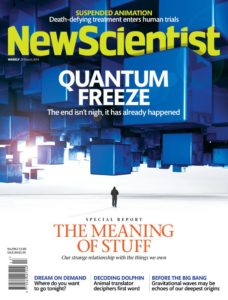Winds of change
Published in Physics World, 1 June 2014
The future of the wind industry is looking brighter thanks to a decades-old laser technology. Jon Cartwright explains how laser anemometry could cut the cost of wind energy and boost its share of the world’s energy market
On a coastal plain in Østerild, north Denmark, a gargantuan white structure turns solemnly in the breeze. The latest wind turbine designed by the Danish manufacturer Vestas, the V164, is the biggest yet: at 220m, it is well over twice the height of the Statue of Liberty. And when it was finally tested in Østerild at the beginning of 2014, it also proved to be the world’s most powerful – capable of generating 8 MW of power, enough to provide electricity for some 7500 homes.
The V164 is a symbol of the wind industry’s recent success. Over the past 14 years, the number of installed turbines across the world has risen dramatically, from an output of just 17 MW in 2000 to nearly 320000MW last year – corresponding to about 4% of the world’s total energy demand, according to the Global Wind Energy Council. The boom has been due partly to a surge in the construction of turbines in China, but many smaller countries are also adopting the technology. The UK, for example, generated 10% of its electricity from wind power last year, and it has more offshore wind capacity than the rest of the world combined.
Despite this success, however, the industry has sometimes struggled politically – not least because of a conflict between the cost and location of wind farms. Onshore wind power is relatively cheap: it costs about $87 per megawatt-hour, midway between natural gas ($66/MWh) and coal ($100/MWh), according to a 2013 report by the Energy Information Administration (an agency of the US Department of Energy). Plans for new onshore wind farms often face strong local opposition, however, which is why politicians frequently look offshore for new opportunities. But offshore wind is far more costly: the same 2013 report rates it as more expensive than nearly any other energy technology – renewable or otherwise – at about $222/MWh. The high cost of offshore wind was highlighted in March this year when Scottish and Southern Energy, a UK gas and electric company, announced that it would cut its investment in offshore turbines in order to assure a two-year price freeze for its customers. […]
To read the rest of this article please send an email to for a pdf.
 AS ENDINGS go, it is a bit of an anticlimax. As the universe enters old age, its stars burn out. Slowly, the temperature across the cosmos reaches equilibrium. With no heat flowing, thermodynamic laws make it impossible to transfer energy in a useful way. Nothing interesting or productive happens any more. Everything creaks to a standstill.
AS ENDINGS go, it is a bit of an anticlimax. As the universe enters old age, its stars burn out. Slowly, the temperature across the cosmos reaches equilibrium. With no heat flowing, thermodynamic laws make it impossible to transfer energy in a useful way. Nothing interesting or productive happens any more. Everything creaks to a standstill.